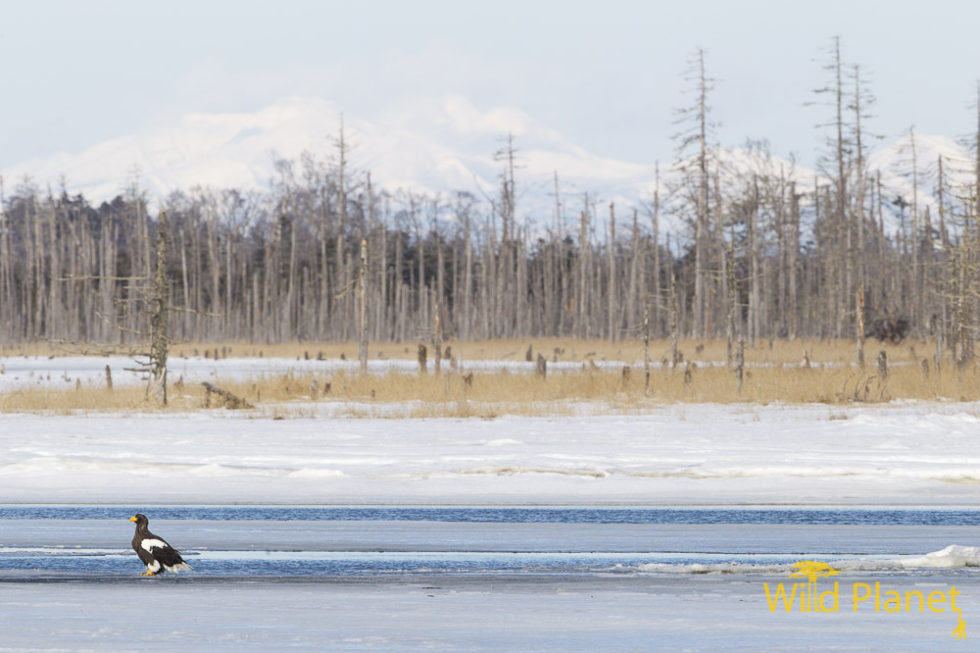As soon as I returned from my trip to Australia I immediately began to wander the mountains. However this time I am not speaking of hiking, but climbing a fixed ropes and iron steps course called a via ferrata (literally translated from Italian into “iron way”). I will precisely speak about the Deannna Orlandini via ferrata near Crocefieschi, about an hour away from Genoa.
The evening prior to leaving I prepared all of my equipment with only one doubt in my mind; what photographic material should I bring? I opted for the reflex 5D, the 24-105 and the fisheye.
The trouble was arranging the photographic equipment in such a manner that it would not get in the way of climbing. In the end, I put the reflex with the 24-105 inside a small Lowepro Toploader case, and the fisheye in a small lens case. I then attached everything laterally to the harness, one case on the right side and the other case on the left.
The beginning of the course
After a short and simple 700 meter trail, practicable in 20 minutes, the real via ferrata began. A sign indicated the direction to take.
After gearing up we began. I, being less experienced, stayed between my other two climbing companions, Renato and Vittorio.

Beginning of the Deanna Orlandini via ferrata
The beginning was very hard work. The grip was near a hollow rock. By entering this cavity the course became more and more vertical and the climb stretched into a steep cleft in the rock. Just after I saw the conditions of the climb I took the photographic equipment off and placed it in my backpack. At this point it was not easy to take a photo, not even with a compact camera. Since there were no stakes, steps or ladders it was necessary to work vertically just on the rocks surface with steel cables. This having been my first experience climbing a via ferrata it was not optimal to take on this cleft. However, after “thanking” my companions I began climbing. It took me 8 to 10 minutes to climb up this large crack, which was quite difficult for me. During this passage Renato’s indications helped me very much, but having Vittorio behind me was also a big help.
After this part of the course it lightened up until we hit the steep climb up the vertical face of Biurca. On this face the only grips were formed by the rock itself and there were still sheer overhangs. However, different than the cavity in the beginning, the rock allowed me to rest in order to take photos, obviously securing myself with a carabineer.

The Biurca climb

The Biurca Climb amongst the “Città di Busalla bivouac”

Città di Busalla bivouac
As soon as we got to Biurca we followed the Carrega do Diao (the Devil’s chair) along ledges, equipped walls and a small Tibetan bridge. It was more beautiful than difficult.





The small steel cable bridge at the base of Carrega do Diao
Once we passed over the simple bridge we rested for a moment before climbing the sheer pilaster that lead to the peak. This part was very challenging. About two thirds of the way up I had to take a few minutes rest because I was really very tired. Then with our last efforts we arrived at the summit.

Carreda do Diaos Peak

View of the valley floor

On the way back
In general I found this via ferrata particularily difficult, at least in some points (that, by the way, could have been bypassed). The fact that this was my first time probably influenced the difficulties that I ran into. However, both my experienced companions and information found on the internet confirmed that this is a difficult course. Vieferrate.it, the main Italian website about vie ferrate, writes “From pretty difficult to difficult with some parts that are very difficult. Alpine course for experts to confront only with proper preparation, experience and equipment.”
Difficulty aside, the path is very beautiful. Even if the peaks are not very high, with the beautiful weather you can see everything from the Mediterranean sea to the Monte Bianco (White Mountain) to the Alps mountain range.
Resources
Link: http://www.vieferrate.it/ferratadeanna.htm
GPS coordinates beginning point (Lat/Lon hddd.ddddd°): N44.59008 E9.01819
Equipment:
- Technical wear
- Harness, helmet and climbing gloves.
- 2 carabineers (used for resting and for hoisting the backpack up walls)
- 35 liter backpack
- 1 liter canteen full of tea
- 2 energy bars
- Whistle
- Survival blanket
- Shoe laces
- Light stick
- Reflex
- 2 lenses (24-105 e fisheye)
- Trekking Garmin Oregon 550 GPS
The photographs and the articles presented on the website www.massimilianoeleota.com come from extremely personal experiences. Every reader must evaluate their own experience, mental and physical preparation, endurance of fatigue heat, cold and metrological conditions, gear, etc. because they are variables to consider that cannot be substituted by reading one or two articles.
All of the pictures and articles are available as prints and as high resolution files for magazines, books and other uses. All the material from the website www.massimilianoeleota.com is copyrighted and is exclusive property of Eleota Massimiliano and cannot be utilized in any other shape or form without a written authorization by the author.
Appena tornato dal viaggio in Australia ho ripreso subito a girare per monti, ma questa volta non racconto un trekking ma una ferrata, ed esattamente la ferrata Deanna Orlandini, in prossimità di Crocefieschi, a circa un’ora da Genova.
La sera prima ho preparato tutta l’attrezzatura con il solo dubbio sul materiale fotografico da portare. Alla fine ho optato per la reflex 5D, il 24-105 ed il fisheye.
Il problema è disporre l’apparecchiatura fotografica senza che sia d’intralcio all’arrampicata. Alla fine ho messo la reflex con il 24-105 dentro una piccola custodia Lowepro Toploader, mentre il fisheye l’ho messo dentro ad un piccolo portaobiettivi. Poi ho fissato il tutto all’imbragatura lateralmente, un pezzo sul lato destro e l’altro sul lato sinistro.
Inizio del percorso
Dopo un breve e facile sentiero di 700 metri, percorribile in circa 20 minuti, inizia la ferrata vera e propria. Un segnale indica la direzione da intraprendere.
Dopo esserci attrezzati partiamo. Io essendo il meno esperto sto in mezzo agli altri due compagni di ventura, Renato e Vittorio.

- Inizio della Ferrata Deanna Orlandini
L’inizio è veramente impegnativo. L’attacco è in prossimità di una cavità rocciosa. Entrando in questa cavità il percorso è sempre più verticale e la salita si snoda in una stretta e ripida spaccatura della roccia. Appena ho visto le condizioni di salita ho preso l’attrezzatura fotografica e l’ho riposta nello zaino. In questo punto non è facile fare foto, nemmeno con una compatta. Non essendoci pioli, gradini o scalette si è costretti a lavorare in condizioni verticali solo ed esclusivamente sulla roccia ed il cavo di acciaio. Come prima esperienza di ferrata non è il massimo affrontare questa fenditura, comunque, dopo aver “ringraziato” i miei compagni, ho iniziato ad arrampicarmi. Ho impiegato circa 8-10 minuti per salire questo canalone e per me è stato abbastanza impegnativo. Durante questo passaggio mi hanno aiutato molto le indicazioni di Renato, ma sopratutto di Vittorio che era dietro di me.
Dopo questo punto la ferrata diventa più soft fino alla salita della ripida parete verticale della Biurca. Su questa parete gli unici appigli vengono dalla roccia e non mancano i tratti strapiombanti, però, a differenza del canalone di partenza, la roccia permette di riposarsi o fare delle foto, ovviamente mettendosi in sicurezza con un rinvio.

- Salita alla Biurca

- Salita alla Biurca, con il bivacco “città di Busalla” sullo sfondo

- Bivacco Città di Busalla
Arrivati sulla Biurca si prosegue per la Carrega du Diao (sedia del diavolo) tra cenge, pareti attrezzate ed un piccolo ponte tibetano, più scenografico che impegnativo.





- Il piccolo ponte su cavo di acciaio alla base della Carrega do Diao
Passato il semplice ponte ci siamo riposati qualche minuto prima di salire il pilastro strapiombante che porta alla vetta. Questo tratto è stato veramente duro. A circa i due terzi della salita mi sono dovuto riposare qualche minuto perché ero veramente stanco. Poi con un ultimo sforzo siamo arrivati in vetta.

- In vetta alla Carrega do Diao

- Panorama sulla vallata sottostante

- Sulla via del ritorno
In generale ho trovato questa ferrata particolarmente impegnativa, perlomeno in alcuni punti (che tra l’altro è possibile aggirare). Probabilmente il fatto che questa era la mia prima volta ha influito sulle difficoltà riscontrate, però sia i miei compagni di ferrata sia le informazioni trovate in Internet confermano che si tratta di un percorso difficile. Vieferrate.it, il principale sito italiano in materia di ferrate scrive “Da abbastanza difficile a difficile con alcuni tratti molto difficili. Percorso alpinistico per esperti da affrontare solo con preparazione, esperienza ed attrezzatura adeguate.”.
Impegno a parte, il sentiero è veramente bello e, anche se le vette sono a bassa quota, con il bel tempo si vede benissimo sia il mar Mediterraneo sia il Monte Bianco e tutta la catena Alpina.
Risorse
Link: http://www.vieferrate.it/ferratadeanna.htm
Coordinate GPS punto di partenza (Lat/Lon hddd.ddddd°): N44.59008 E9.01819
Materiale portato:
- Abbigliamento tecnico
- Imbragatura, caschetto e guanti da ferrata
- 2 rinvii (per sosta e per levare lo zaino in parete)
- Zaino da 35 litri
- 1 litro di the nella borraccia
- 2 barrette energetiche
- Fischietto
- Telo termico
- Stringa per le scarpe
- Lampada chimica
- Reflex
- 2 obiettivi (24-105 e fisheye)
- GPS da Trekking Garmin Oregon 550
Le fotografie e gli articoli presenti nel sito www.massimilianoeleota.com sono frutto di esperienze strettamente personali. Ogni lettore deve valutare la propria esperienza, preparazione fisica e psichica, sopportazione della fatica, del caldo, del freddo, condizioni meteorologiche, attrezzature, ecc. in quanto sono variabili da tenere in considerazione e che non possono essere sostituite con la lettura di uno o più articoli.
Tutte le foto e gli articoli sono disponibili come stampe o come file ad alta risoluzione per riviste, libri e altri utilizzi. Tutto il materiale del sito www.massimilianoeleota.com è coperto da copyright ed è di proprietà esclusiva di Eleota Massimiliano e non può essere utilizzato in alcun modo o forma senza un accordo scritto dell’autore.



Finalmente ecco le foto dell’impresa sul sito.
scherzi a parte devo proprio dire che è stata una bellissima giornata e tu non ti svilire per essere alla prima ferrata te la sei cavata egregiamente tra l’altro anche io sono rimasto colpito dalla difficolta di alcuni passaggi decisamente impegnativi ma di grande soddisfazione. Il tutto a 20 minuti da genova mica male no?
A questo punto, rotto il ghiaccio, non ci resta che partire per altre imprese in Liguria abbiamo la ferrata degli artisti e poi so che c’è qualcosa in val d’aveto ma roba molto breve. Vediamo il da farsi alla prossima, saluti Renato.
ciao, sono il fratello di Renato.. ho visto le foto da lui segnalate… che dire, mi sembrava di esagerare con la mia mountain bike, ma mi rendo conto che a livello rischio io e i Bike Brothers siamo dei pivelli avete un bel fegato…(fortuna che non sono venuto quel giorno, come mi aveva chiesto Renato, sennò ero ancora lì appeso) ma come gli dico tutte le mattine ( il nostro saluto, cioè….. TESTA DE C***O )non si può pretendere da un neofita certe performances . comunque scherzi a parte veramente complimenti, sia per l’impresa che per il sito. Ciao, Giorgio.
Ciao Giorgio,
mi ha fatto piacere che sei venuto a vedere le foto. Per quanto riguarda la pericolosità io ho degli amici che fanno delle sgambate giù dai monti con la mountain bike che io non mi sognerei mai di fare, quindi ad ognuno il suo ;-).
Grazie per i complimenti.
Ciao,
Massimiliano